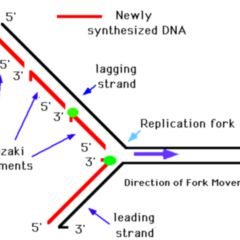

PARP1 can also regulate the longevity of reversed forks by inhibiting RECQ1, a helicase that can reset reversed forks independently of RAD51-mediated HR 18, 19. In addition, PARP activity may promote homologous recombination (HR)-mediated resetting and/or repair of reversed or collapsed forks, by regulating the recruitment and/or activity of MRE11 nuclease 12, 17. A likely role for PARP1 and/or PARP2 at collapsed forks is to suppress binding by Ku and 53BP1, which otherwise can trigger ‘toxic’ nonhomologous end-joining (NHEJ) 14, 15, 16. For example, PARP1 may detect and signal the presence of paused, reversed and/or collapsed DNA replication forks 12, 13.

Indeed, S phase is the primary source of poly(ADP ribosylation) in unperturbed proliferating cells 11. In addition to DNA breaks arising stochastically across the genome, PARP1 and PARP2 are also involved in the detection and processing of various DNA replication intermediates 10. At SSBs, PARP1 and PARP2 fulfill a variety of roles, depending on the nature and source of the break, including the regulation of chromatin compaction and the recruitment of DNA repair proteins 5, 9. DNA damage-stimulated PARPs bind to and are activated by a variety of DNA substrates, of which DNA single-strand breaks (SSBs) and double-strand breaks are the best characterized. Poly(ADP-ribose) is a highly dynamic and transient signal that is rapidly degraded by poly(ADP-ribose) glycohydrolase (PARG) 6, 7, 8. The archetypal PARP enzyme is PARP1 that, along with PARP2 and PARP3, is activated by DNA breaks and regulates the cellular DNA damage response 3, 4, 5. Poly(ADP-ribose) polymerases (PARPs) are a superfamily of enzymes that use NAD + to modify themselves and other proteins with mono- or poly(ADP-ribose) 1, 2.


 0 kommentar(er)
0 kommentar(er)
